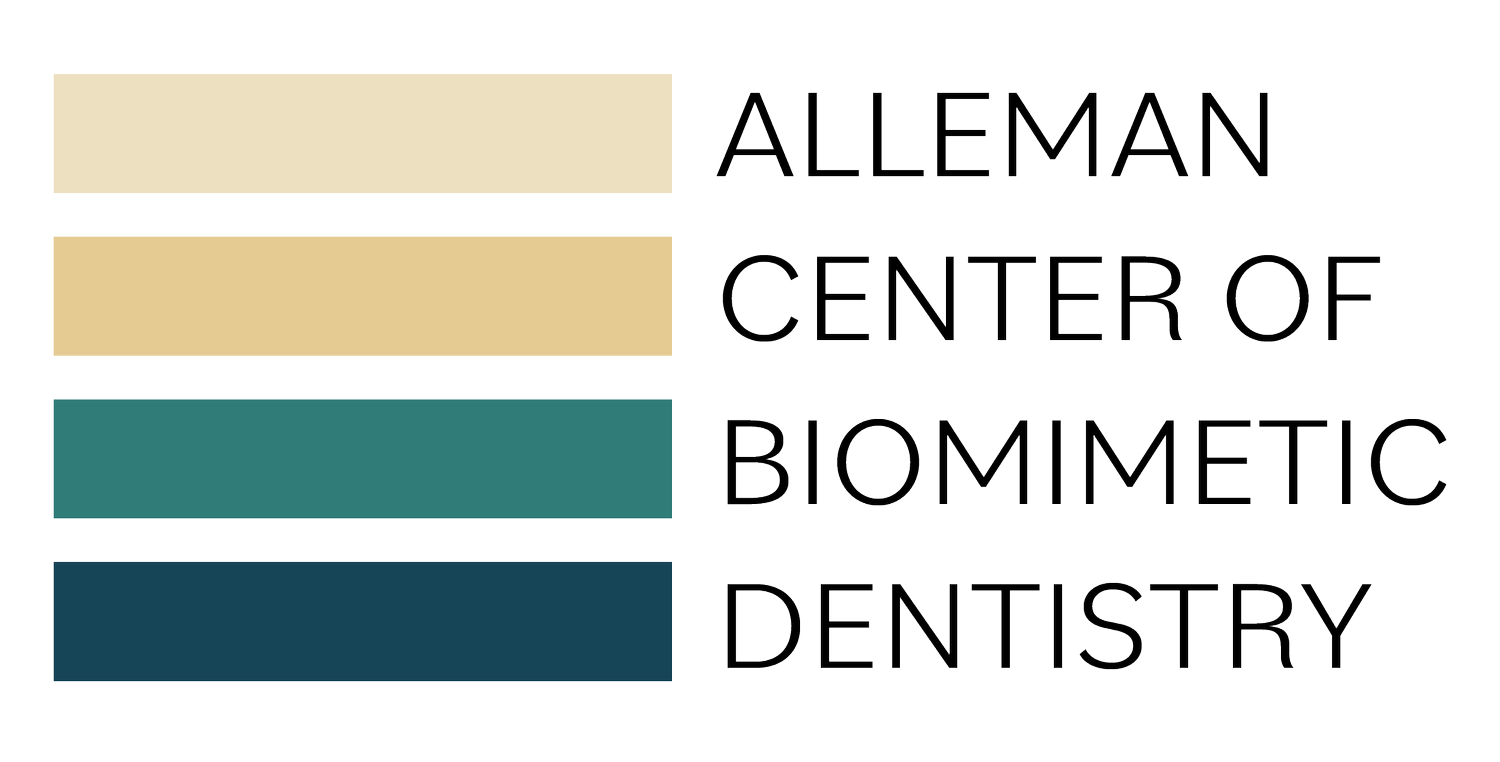Deep Margin Elevation and Biologic Width
Deep margin elevation is a technique that allows subgingival defects in a tooth to be restored without crown lengthening surgery. Saving patients healing time and higher treatment costs, deep margin elevations can be performed as part of a restoration appointment and can benefit overall oral health compared to traditional recommendations for treating subgingival areas of the tooth.
Deep margin elevation allows teeth with deep cracks or caries to be restored without crown lengthening surgery. Case by Dr. Davey Alleman, DMD.
What is deep margin elevation?
Deep margin elevation replaces deep dentin where it has been removed to treat deep caries or cracks. If you can isolate a tooth, you can raise the margin. At the Alleman Center, we teach techniques that use rubber dam, teflon, matrixes, copper sheeting and wedges to isolate deep areas for restoration. These techniques are challenging, but overall they save your patient time and money by offering a better outcome for their tooth.
Once the tooth is isolated, dentin replacement restores the deep area, and then the restoration continues from there. Deep margin elevation conserves tooth structure and gives you more control over your margin by placing it supragingival, which allows for more predictable impressions and scanning. Regardless of your enamel replacement, this technique will benefit the restoration’s outcome.
Deep margin elevation case by Dr. Davey Alleman, DMD.
Deep margin elevation has been studied and documented since 1998, most notably in:
Dietschi D, Spreafico R. Adhesive cementation of tooth-colored posterior restorations. Pract Periodont Aesthet Dent. 1998;10(1):47-54
Frese C. Proximal box elevation with resin composite and the dogma of biologic width: clinical R2-technique and clinical review. Oper Dent. 2014; 39-1 22-31
Sarfati A, Tirlet G. Deep margin elevation versus crown lengthening: biologic width revisited. Inter J Esthet Dent. 2018;(13) 334-356
Bresser R, et al. Up to 12 years clinical evaluation of 197 partial indirect restorations with deep margin elevation in the posterior region. J of Dent. 2019;91: 103227
Does deep margin elevation violate biologic width?
Many traditional dental practices recommend avoiding deep margin elevation because of the belief that it violates biologic width and leads to inflammation. This is untrue. In the 2018 Sarfati and Tirlet article, the authors found few to no signs of clinical inflammation present when the deep margin elevation was performed with good isolation and bonding protocols.
The cause of inflammation is not the biologic width violation, but a poor seal deep in the tooth, resulting in repeated infections from bacteria under the restoration. To avoid inflammation, seal the tooth at the nanometer level to prevent bacteria from entering and with a low c-factor approach to avoid a debond between your adhesive and the deep dentin. By adding Ribbond for stress relief on the axial wall of the deep margin elevation, we have seen complete success over decades with deep margin elevation in clinical settings at the Alleman Center and with the doctors we have trained.
Is deep margin elevation biomimetic?
Deep margin elevation is often discussed in biomimetic dentistry because it is less invasive than crown lengthening surgery. In Dr. David Alleman’s Six Lessons Approach to Biomimetic Restorative Dentistry, the set of protocols taught in all Alleman Center programs, deep margin elevation is taught as part of the restoration process because it is an essential tool for biomimetic dentistry. However, not all deep margin elevations are biomimetic.
Deep margin elevation case using the Six Lessons Approach to Biomimetic Restorative Dentistry by Dr. Davey Alleman, DMD.
To truly mimic the function of a natural tooth, a deep margin elevation:
Must be sealed at the nanometer level with resin coating to protect against bacteria and create a secure bond
Should be performed with low c-factor layering and slow-start photo activation to reduce stress to the bond
When done properly, will mimic the progressive flexibility of a natural tooth and, because of this, function like a natural tooth
Deep margin elevation is a technique that conserves healthy tooth structure and saves teeth that may otherwise be deemed “unrestorable.” Long-term studies support its effectiveness and the clinical cases we have seen at the Alleman Center and from the doctors we have trained over the past 20 years confirm this.
Doctors interested in learning more about deep margin elevation and other conservative dentistry practices can view our upcoming Alleman Center training program, schedule a meeting with Dr. David Alleman or contact us at info@allemancenter.com.
Learn more about deep margin elevation in Dr. David Alleman, DDS’s Six Lessons Approach Podcast.











